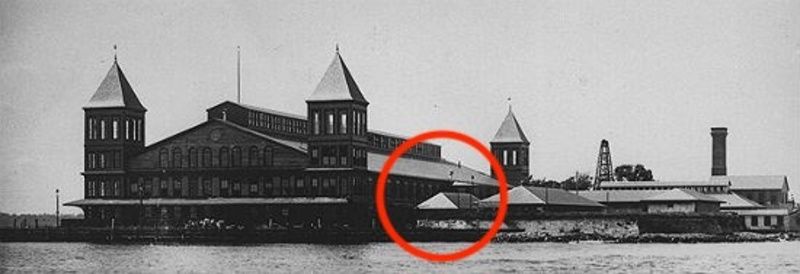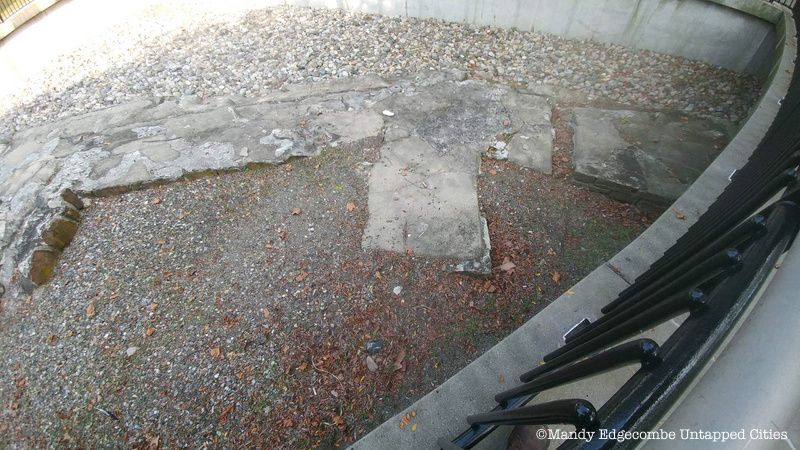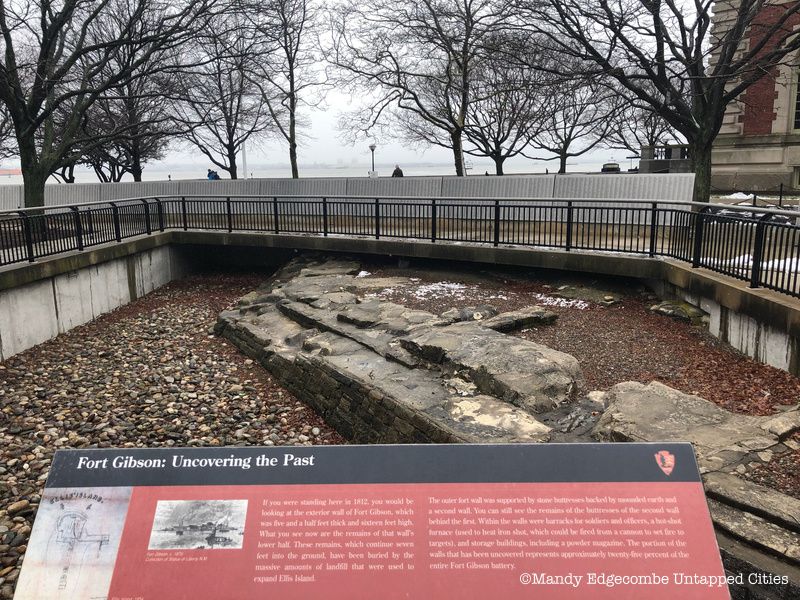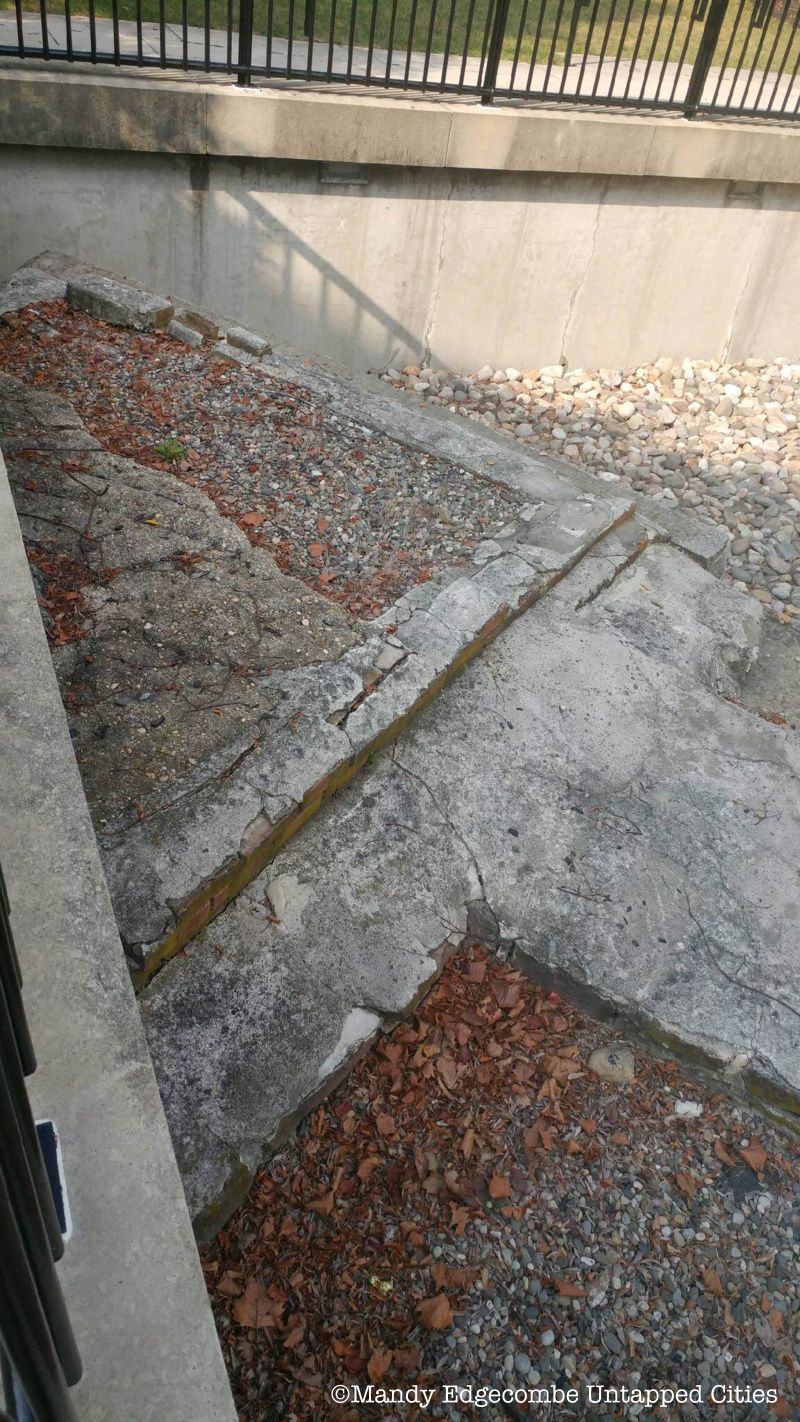

One of the fun facts our guests learn on our hard hat tour of the abandoned hospital complex at Ellis Island is that the turreted Beaux Arts building we know and love today was not actually the first federal immigration station on Ellis Island. That one, built out of wood, opened on January 1, 1892 and was completely destroyed by fire in 1897. However, according to the book “Touring Gotham’s Archaeological Past” by Diana DiZerega Wall and Anne-Marie Cantwell, there are still remnants of the first immigrant station at Ellis Island if you know where to look. However, it’s something that requires a bit of investigation as the remnants are not listed on any interpretive signs. One such artifact can be found at the Fort Gibson ruins on the North side of the Island, near the Wall of Honor.
In 1890, with the influx of immigration in the United States increasing every day, and states having their own policies regarding immigration that didn’t always correspond with each others’, the federal government took control. New York State controlled immigration for the port of New York until 1890: it was the main point of arrival for most immigrants coming to the United States, and they were processed at Castle Garden, know today as the Castle Clinton National Monument. There were, however, processing centers in major coastal cities such as Philadelphia and Boston, but the numbers of people arriving to those ports were far lower.
Overcrowding and crime at Castle Garden was rampant and it was deemed necessary to isolate immigration services from the rest of the city and build a bigger facility. When it was time to choose the place for a new immigration station, many sites were suggested around New York Harbor, but the old Fort Gibson was chosen on Samuel Ellis’ 12-acre island. Fort Gibson was built as a part of a series of forts lining New York harbor, including Fort Wood on Liberty Island, and the forts on Governors Island, to protect against an attack by the Royal British Navy during the War of 1812. Although those fortifications never saw action in that war, they continued to be army posts for some time through the 19th and 20th centuries.

Image from National Archives and Records Administration via NPS, red emphasis added by author.
Following the 1897 fire that burned down the first immigration station, there was a contest for architects to come up with a new building. Famed architects McKim, Mead, and White were beat out for the contract, and it was given to the young architectural firm, Boring and Tilden. On the night of the fire, 140 people were on the Island, but no one was killed or seriously injured. Immigrants were processed at the barge office at the battery next to Castle Garden during construction of the new, fireproof building. The current structure was built exactly as is on its foundation, which consists of garnet laden Manhattan schist. However, there were some nearby outbuildings used for very basic medical care, one of them being the disinfecting house, circled in the photo above.
The photos below and above are the actual foundational remnants of two buildings, which are not mentioned on the signs surrounding the Fort Gibson ruins. These outbuildings originally belonged to the the U.S. Army installation at Fort Gibson, and were repurposed for use of immigrant processing. They served as general medical facilities where simple disinfecting procedures took place, so there wasn’t much of a medical staff and very few beds for overnight stays. At this time in history, the U.S. Public Health Service did not officially exist and it was merchant marine hospitals that would tend to the sick international traveller (predominately seamen).



Healthcare as we know it today was still in its early stages and some of the sanitary and hygienic practices that saved lives and govern our hospitals today were invented and discovered at the Marine hospital at Ellis Island which would not be fully completed until 1911. The Marine hospital service officially became the United States Public Health Service (PHS) in 1912 due to the completion of the Ellis Island hospitals, which you learn more about during our upcoming tour:
Behind-the-Scenes Hard Hat Tour of the Abandoned Ellis Island Hospital
Next, check out the Top 10 Secrets of Ellis Island and read about 20 Abandoned Places in NYC: Asylums, Hospitals, Power Plants, Islands, Forts.

